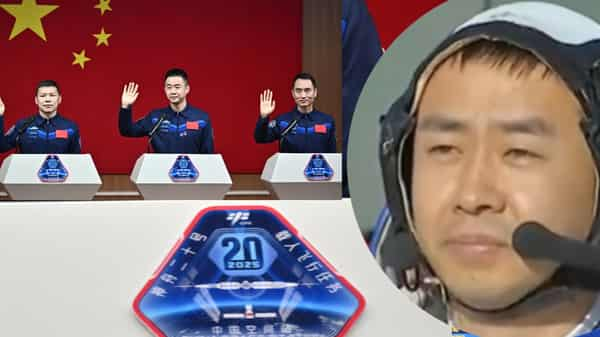China announced on Wednesday that a veteran astronaut will lead two crew members on their first flight to the Tiangong space station, the latest milestone in its race to send a manned mission to the Moon by 2030.
The Shenzhou-20 mission is scheduled to blast off at 5:17 pm on Thursday (0917 GMT) from the Jiuquan Satellite Launch Center in northwest China, Lin Xiqiang, deputy director of the China Manned Space Agency (CMSA), told a news conference.
At the helm will be Chen Dong, a 46-year-old former fighter pilot and experienced space explorer who, in 2022, became the first Chinese astronaut to spend more than 200 cumulative days in orbit.
Speaking about Thursday’s Shenzhou mission — which will be his third — Chen said he was “still very excited”.
“Every space journey is very unique, so I look forward to bringing in more experience and breakthroughs in the flight,” the mission commander said.
Joining Chen will be two other male astronauts, Chen Zhongrui, a 40-year-old former air force pilot, and Wang Jie, a 35-year-old former space technology engineer.
Both will be embarking on their first space flight, Lin said.
“Today, I am on the point of realising my dream of flying in space,” Chen Zhongrui told another news conference on Wednesday organised to introduce the astronauts to the public.
“To be honest, when we first started training together, we were still a little nervous,” he said of himself and Wang.
“Now (the three crew members) are integrated like a single person,” he said.
The astronauts currently aboard the Tiangong space station are scheduled to return to Earth on April 29 after completing handover procedures with the incoming crew, Lin said.
China’s space programme, the third to put humans in orbit, has also landed robotic rovers on Mars and the Moon.
The Tiangong space station — crewed by teams of three astronauts that are exchanged every six months — is the crown jewel of China’s space project.
This mission will “lay a firmer technological foundation for a crewed lunar mission and follow-up tasks”, said Zhou Yaqiang, a top technology official at the China Manned Space Program.
– Space rivalry –
An AFP team joined a government tour of the remote launch site on Wednesday afternoon.
The rocket stood in desert sunlight encased in a sky-blue launch tower, surrounded by fluttering red flags bearing patriotic slogans.
Workers in blue jumpsuits buzzed around the tower and the whir of machinery could be heard.
China has ramped up plans to achieve its “space dream” under President Xi Jinping.
Beijing says it aims to send a crewed mission to the Moon by 2030, where it intends to construct a base on the lunar surface.
China has poured billions of dollars into its space programme in a bid to catch up with the United States and Russia and achieve its celestial goals.
Despite the program’s “impressive” pace of development, China still “lags significantly behind the United States”, Marc Julienne, director of the Center for Asian Studies at the French Institute of International Relations, told AFP.
However, US President Donald Trump “may inadvertently give China an edge by cutting budgets allocated to research and certain space programmes”, he said.
Like previous missions, the Shenzhou-20 crew will conduct experiments in physics and life sciences and will install protective equipment against space debris.
For the first time, they will also bring aboard planarians –- aquatic flatworms known for their regenerative abilities.
“The results could help address problems related to injuries sustained in space environments,” Lin said.
China has been excluded from the International Space Station since 2011, when the United States banned NASA from collaborating with Beijing.
It has since sought to bring other countries into its space programme.
China and Pakistan signed an agreement in February paving the way for the first foreign astronaut to board the Tiangong space station.
As part of this process, “two Pakistani astronauts will be selected to come to China for training”, the CMSA confirmed on Wednesday.






